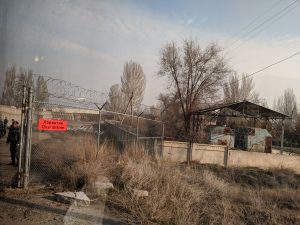On March 19, arriving at Bishkek’s Manas International Airport from Istanbul, I was sent to mandatory quarantine according to Kyrgyzstan’s rules for travelers who had visited the highest-infection countries within the previous 30 days. At the time, that included China, Italy, Iran, Spain, South Korea, France, the United States, Switzerland, the United Kingdom, the Netherlands, Norway, Austria, Sweden, Belgium, Denmark, and Germany (where I had visited for several days at the beginning of March). Travelers arriving from a further set of countries were legally obliged to observe a 14-day self-quarantine at home, with daily check-ins by local medical staff in each district.
In mid-March, Kyrgyzstan had only recently recorded its first case of the novel coronavirus disease, COVID-19. As of April 6, Kyrgyzstan had identified 216 cases, most of them in the south of the country where the first cases appeared.
With the capital, Bishkek, and much of the south now under an official “state of emergency,” local residents and officials alike hope to be able to contain the disease without reaching the state of exponential growth seen in many countries, learning from the experiences of those countries that have already been hit the hardest.
Like most travelers arriving via Manas airport last month, I was sent to a repurposed military base, once home to the U.S. military’s Transit Center Manas and donated to the Kyrgyz National Guard upon the departure of the United States from the facility in June 2014. As an American formerly working in Kyrgyzstan and now married to a Kyrgyz citizen I had long been curious to see inside the facility, but never expected to do so for an extended visit.
Stephen Lioy is travel photographer and writer based in Bishkek, Kyrgyzstan.















































